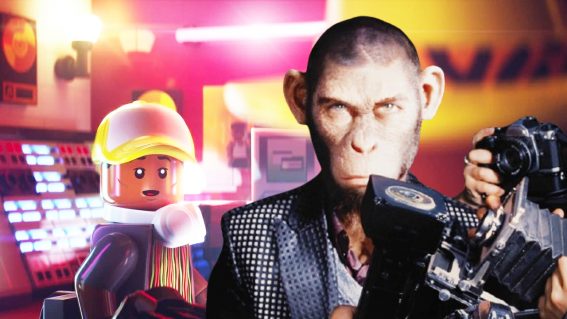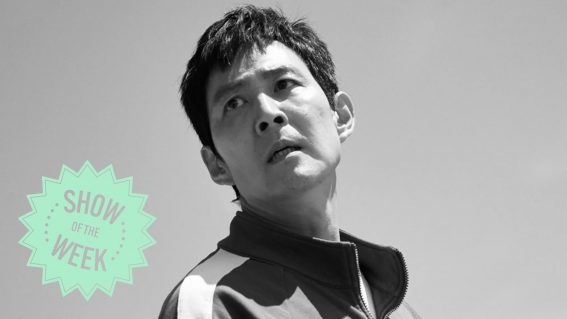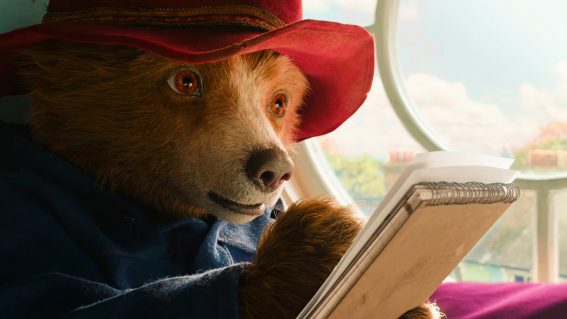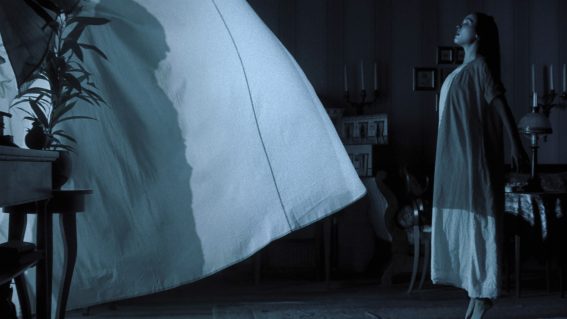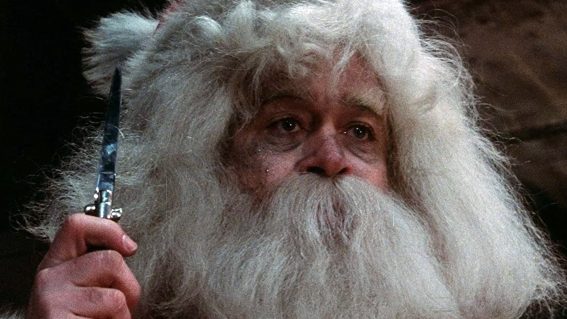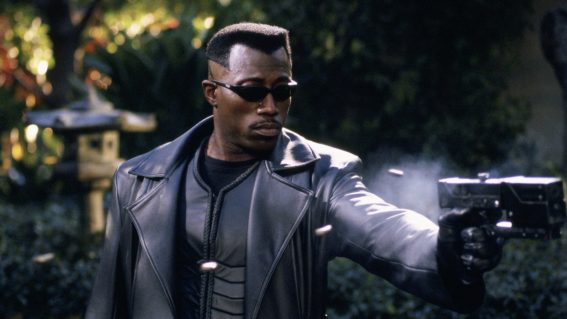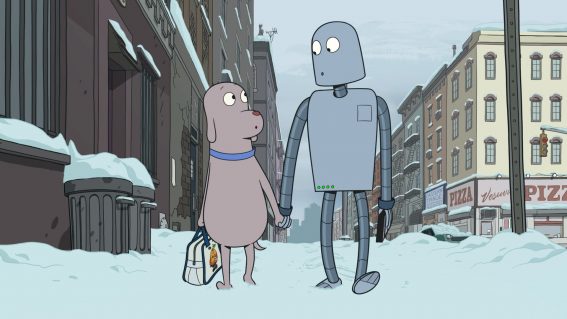New Star Wars series Ahsoka is promising, if a little rusty in places

We’re all drowning in content—so it’s time to highlight the best. In her column, published every Friday, critic Clarisse Loughrey recommends a new show to watch. This week: New live action Star Wars series Ahsoka.
I love Star Wars. I’ve never seen Rebels. I couldn’t tell you the number of people who seemed shocked by that admission. The Dave Filoni-fronted, animated series first aired on Disney XD back in 2014, as a semi-continuation of the similar Clone Wars series. Both, initially, were moulded in the style of the traditional, Saturday morning cartoon; both, over time, were seized upon and elevated by hardcore fans until they became their own, somewhat niche cultural gathering point.
Clearly, Lucasfilm was paying attention, and, throughout the development of Disney+’s small screen Star Wars slate, Filoni has seen himself inch gradually toward the captain’s seat. Not only have several of his creations, namely former Jedi Ahsoka Tano (previously voiced by Ashley Eckstein, now played by Rosario Dawson) and former Mandalorian ruler Bo-Katan Kryze (Katee Sackhoff), already been introduced in The Mandalorian, but Filoni was recently announced as the director of an upcoming, Mandalorian-themed feature film. Star Wars has essentially become the Filoni-verse.
It’s a smart gamble. Filoni was personally hired by George Lucas, a little before LucasFilm was sold to Disney, to oversee the Clone Wars series. You could argue there’s something of a master-apprentice relationship there; an Obi-Wan Kenobi teaching Luke Skywalker the ways of the Force. Filoni’s deep-rooted love of Star Wars and its principles of family, bravery, and sacrifice, have helped him craft a stable of stories and characters that have clearly connected on a profound level with fans.
But here comes the central question of Ahsoka, Disney+’s new The Mandalorian spin-off, that’s really a fifth season of Rebels: should we be forced to take the optimist’s position and simply be glad that Star Wars has put an impassioned artist like Filoni at its centre? Or is it acceptable to feel at least a little cynical about a studio retroactively making two animated series with hundreds of episodes (all conveniently available on Disney+) appointment viewing? Have we really reached a place where we’ll gladly accept homework from corporations?
Granted, the first two episodes of Ahsoka do an admirable job of establishing who these characters are and what on earth they want. Any of the uninitiated should just about be able to keep up. An opening crawl established the threat posed by Grand Admiral Thrawn, the so-called “Heir to the Empire”, one of the only remnants of the defeated Galactic Empire (ie the baddies in the original trilogy) adept and powerful enough to threaten the newly established New Republic (ie the goodies in the original trilogy).
He’s in exile, hiding away, and Ahsoka starts the series by solving what might as well be one of the puzzles from the Assassin’s Creed games in order to acquire a “secret map” that leads to his location. She can’t decipher it on her own, so seeks out the aid of her old ally, the green-skinned Twi’lek Hera Syndulla (Mary Elizabeth Winstead), and her old apprentice, the Mandalorian Sabine Wren (Natasha Liu Bordizzo).
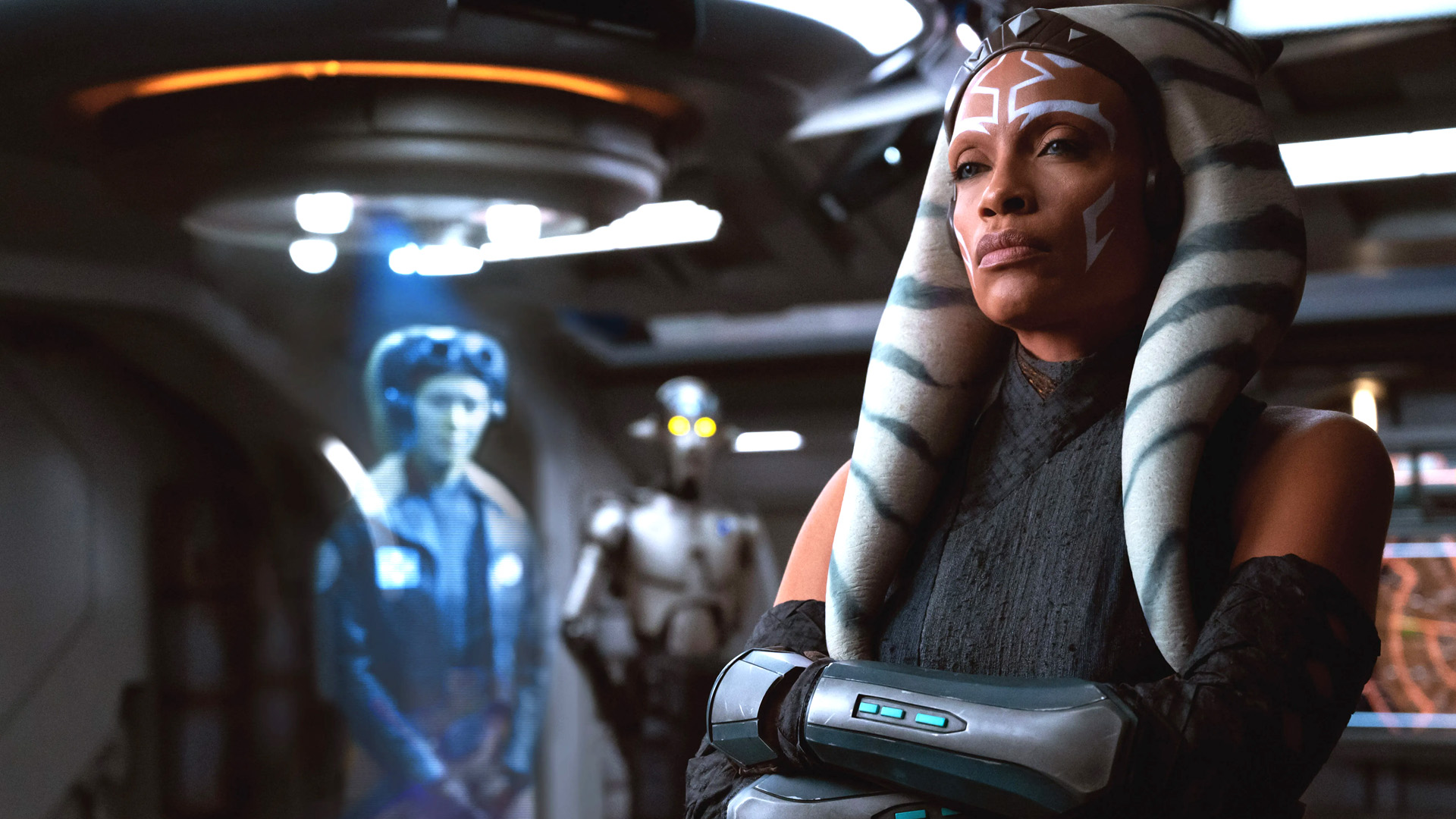
Dawson plays Ahsoka’s stoicism with a wry smirk that keeps the character nimble; Filoni (and episode two director Steph Green) have a good handle on Star Wars iconography, which means plenty of cool shots of lightsabers; and the late Ray Stevenson, as Baylan Skoll, is already proving to be an intriguing and richly shaded villain.
Ahsoka is, so far, promising. But the lingering issue here is less that the general audience may end up lost in the narrative woods, and more that there’s been a somewhat frustrating assumption that what works in one format—a long-running animated show chiefly watched by kids while they devour bowls of cereal—will work without much alteration in another, namely, an eight-episode, live-action series that’s intended to fit perfectly into the world of the films and act vaguely within the realms of prestige television.

Fandom has a frustrating tendency to view the work they love as one, amalgamated blob of “content” that has to be consumed as a whole in order to be truly appreciated, instead of a vast, interconnected web of stories and voices that you can pick and choose to your liking. And that attitude has only been a detriment to Ahsoka, which comes across as a little rusty in places. In a Saturday morning cartoon, it’s essential to make sure your distracted audience is kept in the loop; in Ahsoka, the endless repetition is more annoying than helpful.
Sabine is established as a tempestuous rebel in her very first scene, where she flees her New Republic duties on her speeder bike, while blasting the galaxy’s equivalent of Paramore. And, yet, in every subsequent scene, it becomes mandatory for a character to remind us that she is, indeed, “stubborn and bullish”. For such a short series, there’s a real worry that Ahsoka will spend so much time reminding us who these people are that we’ll never see them grow. And that’s bad news for everybody, Rebels fan or not.


